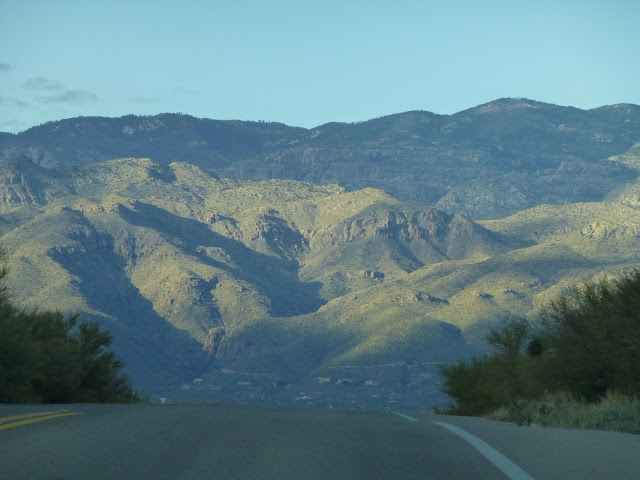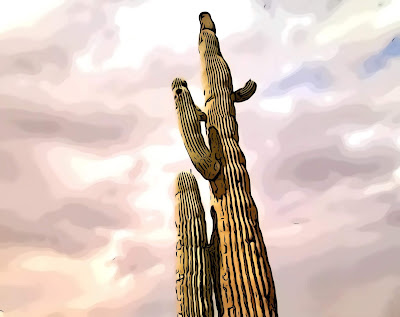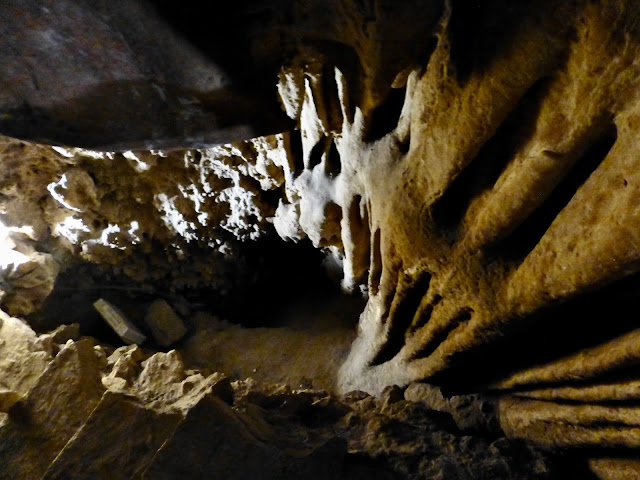Franklin and I spent a week touring parts of Southern Arizona we had not previously visited. Southern Arizona is fairly rural and largely unpopulated. These first photos are in an area called South Tucson but the half hour drive toward the city of Tucson is mostly empty desert. There were only three buildings, one market, one pharmacy, one bank.
We stayed near two parks, Saguaro National Park East and Colossal Cave. Saguaro National Park is split in two pieces on both sides of Tucson. We have visited the west part of the park many times both on foot and on horseback but had never visited the east side.
 |
| Amy and her horse Romeo in Saguaro National Park West, 2011 |
 |
| Sahuaro National Park East |
There are several famous caves in southern Arizona well worth a visit. Colossal Cave is an older, dry cave. Karshner Cave was only discovered a few decades ago and is a wet cave. They don't allow photos there. They are both terrific and interesting to visit. But it turns out caves are hard to photograph (no sense of scale).
 |
| Colossal Cave |
We stopped in Tubac, an early pioneer settlement about halfway between Tucson and Mexico. It is now an artist community and a more or less a sanitized version of Mexico (food, arts and crafts for people too scared to visit Nogales, Mexico, half an hour down the road. See my Nogales post, coming soon for more details on that). Here are a few photos from Tubac.
 |
| A Conestoga wagon, at the local fort and museum. These wagons transported early pioneers and their freight across the country before the transcontinental railroad was built. |
 |
| Mariachis musicians in a Mexican restaurtant |
 |
| Mexican pottery |
 |
| Mexican metal sculptures |
 |
| A painting of the original settlers of Tubac. |
 |
| A photo of some early Tubac residents |
 |
| A painting of some Apache warriors in Southern Arizona. |
We also revisited Casa Grande, a 15th century ruin not too far south of Phoenix. As you may or may not know, for some reason all the Native Americans in Arizona moved out in the early 16th century. This just predates that exodus by 50 years.
 |
| The park service built a roof to cover the ruins to help preserve them. |
 |
| Some unprotected ruins on the site. |
 |
| A painting of people living in the Great House (Casa Grande). there were no stairs, the four floors were accessed by ladders. This was very common in Arizona for safety from raiding tribes. |
If you have not toured Arizona it is a very attractive and interesting state full of natural wonders and scenic spots. Maybe you can explore it yourself sometime soon.
























No comments:
Post a Comment
This blog usually doesn't allow comments so if you can't post them, please email. I'd love to hear from you.